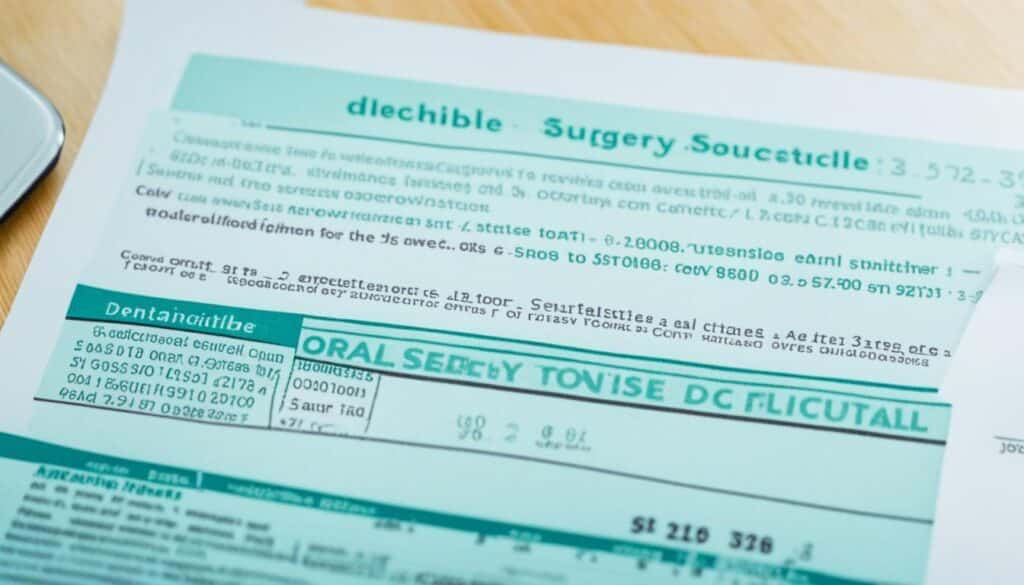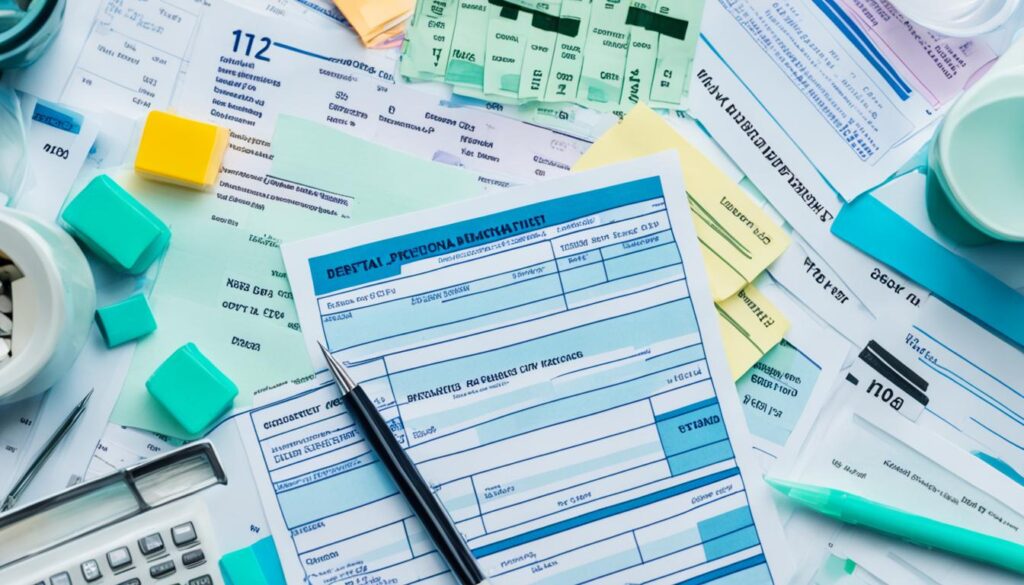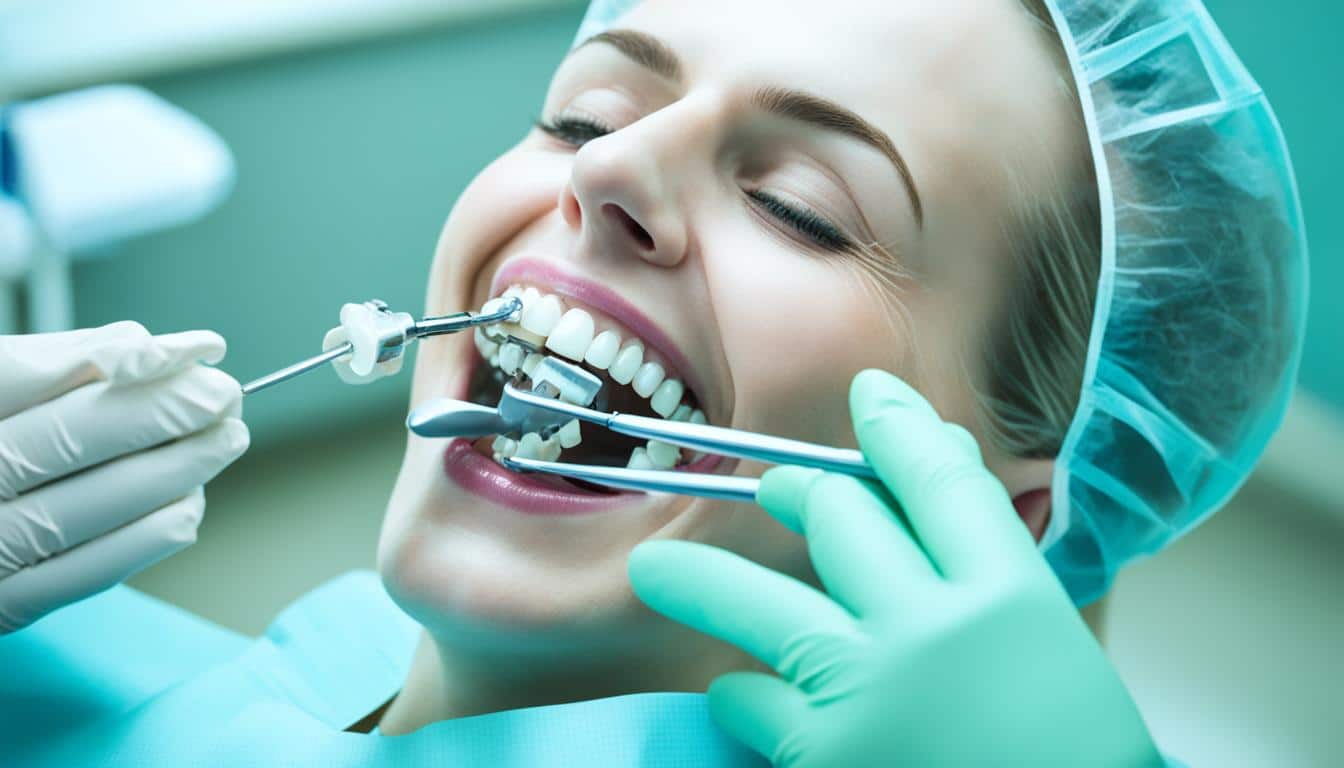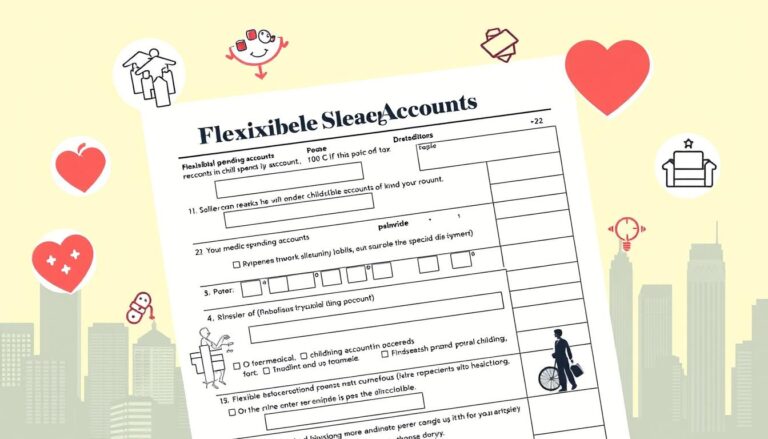Picture this: you wake up one morning with a throbbing pain in your mouth. You take a look in the mirror and notice that your wisdom teeth have decided to make their grand appearance. You know that getting them removed is inevitable, but you can’t help but wonder – will this dental procedure be tax deductible?
Many people find themselves in this situation, facing not only the discomfort of wisdom teeth but also the financial burden that comes with dental expenses. The good news is that dental expenses, including wisdom teeth removal, can be tax deductible under certain conditions.
To determine if your wisdom teeth removal is tax deductible, you need to consider the guidelines set by the Internal Revenue Service (IRS) and your adjusted gross income (AGI). It’s important to understand the requirements and keep proper documentation to support your deductions.
Key Takeaways:
- Wisdom teeth removal may be tax deductible under certain conditions.
- Check the guidelines set by the IRS and your AGI to determine eligibility.
- Keep proper documentation to support your deductions.
- Consult a tax professional for personalized advice on dental expense deductions.
- Consider the limitations and exceptions when claiming dental deductions.
Understanding Medical Expense Deductions
When it comes to the tax write-offs for medical procedures, it’s important to understand the guidelines set by the Internal Revenue Service (IRS). Dental expenses, including wisdom teeth removal, fall under the category of medical expenses and can potentially be deducted from your taxable income.
To qualify for IRS medical deductions, your medical expenses, including dental procedure expenses, must exceed a certain threshold. Currently, the threshold is set at 7.5% of your Adjusted Gross Income (AGI). This means that you can deduct medical expenses that exceed 7.5% of your AGI for the tax year.
To claim deductions for dental procedures, you need to itemize your deductions instead of taking the standard deduction. It’s important to keep proper documentation, such as receipts and statements, to support your deductions. Proof of payment and detailed information about the dental procedures will be crucial when filing your taxes.
IRS Medical Deductions: A Closer Look
Let’s take a closer look at what qualifies as medical expense deductions according to the IRS:
- Dental treatments and procedures
- Prescription medications
- Medical equipment and supplies
- Health insurance premiums (under certain conditions)
- Transportation expenses for medical appointments
- Long-term care services
It’s important to note that cosmetic procedures, over-the-counter medications, and general health expenses are typically not eligible for deductions.
Now, let’s take a look at a hypothetical scenario to better understand how medical expense deductions work:
| Annual Income (AGI) | 7.5% Threshold | Total Medical Expenses | Deductible Amount |
|---|---|---|---|
| $50,000 | $3,750 | $5,000 | $1,250 |
In this example, the individual’s AGI is $50,000. Since their total medical expenses, including dental procedure expenses, exceed the 7.5% threshold of $3,750, they can deduct the amount that exceeds the threshold. In this case, their deductible amount would be $1,250.
Remember, it’s always a good idea to consult a tax professional or use reputable tax resources to ensure you understand the IRS guidelines and optimize your medical expense deductions.
What Dental Expenses Can You Deduct?
When it comes to tax deductions, dental expenses can provide some much-needed relief. The good news is that there are certain dental expenses you can deduct, including oral surgery costs such as wisdom teeth removal. However, it’s important to note that not all dental procedures qualify for tax benefits. Cosmetic dental procedures, for example, are generally not tax-deductible.
To be eligible for deductions, the dental expenses you incur must be medically necessary and not reimbursed by insurance or other sources. This means that if you undergo oral surgery for health reasons, you may be able to deduct the associated costs on your tax return. Just make sure to keep proper documentation, such as receipts and statements, to support your deductions.
Here is a table outlining some examples of dental expenses that may be eligible for deductions:
| Dental Expenses | Tax Deductible? |
|---|---|
| Wisdom teeth removal | Yes |
| Root canals | Yes |
| Periodontal treatment | Yes |
| Crowns and bridges | Yes |
| Orthodontic treatment | Yes, under certain conditions |
| Teeth whitening | No |
| Dentures | Yes |
Remember, the key criteria for dental expenses to be tax-deductible are medical necessity and lack of reimbursement. If you’re unsure about the deductibility of a specific procedure, it’s always a good idea to consult with a tax professional or check the IRS guidelines.

Calculating Your Dental Expense Deduction
Now that you understand the basics of dental expense deductions, let’s dive into the details of how to calculate your deduction. It’s important to remember that you can deduct qualifying dental expenses for yourself, your spouse, and your dependents. So gather your receipts, it’s time to crunch some numbers!
To start, add up all your eligible dental expenses. This includes expenses related to diagnosis, treatment, and prevention of dental diseases. Be sure to include any costs incurred for wisdom teeth removal or other dental procedures.
Once you have the total amount, it’s time to determine the threshold you need to meet. For the tax years 2017 and 2018, the threshold is 7.5% of your adjusted gross income (AGI). In other words, you can only deduct the portion of your dental expenses that exceeds 7.5% of your AGI. However, please note that the threshold increases to 10% for the tax year 2019 and beyond.
Now, subtract the threshold amount from your total eligible dental expenses. The remaining amount is the deduction you can claim from your taxable income. Let’s break it down with an example:
| Total Eligible Dental Expenses | Threshold (7.5% of AGI) | Deduction Calculation |
|---|---|---|
| $4,000 | $3,000 | $1,000 |
In this example, let’s assume your AGI is $40,000. The threshold amount is calculated as 7.5% of $40,000, which is $3,000. Since your total eligible dental expenses amount to $4,000, you can deduct $1,000 ($4,000 – $3,000) from your taxable income. This deduction can help lower your overall tax liability.
It’s worth noting that you should compare your itemized deduction with the standard deduction to determine which option is more beneficial for you. If your itemized deductions, including dental expenses, are higher than the standard deduction amount, it may be advantageous to itemize your deductions on your tax return.
However, if your dental expenses do not surpass the threshold or if your total itemized deductions are lower than the standard deduction, it may be more beneficial to take the standard deduction. Every individual’s situation is unique, so it’s important to evaluate which deduction strategy works best for you.
Remember, properly documenting your dental expenses is crucial to substantiate your deductions. Save all relevant receipts and statements as evidence of your qualifying expenses. With the right calculations and documentation, you can make the most of your dental expense deduction!
Documenting Your Dental Expenses
When it comes to deducting dental expenses, good documentation is key. To ensure your deductions hold up under scrutiny, it’s essential to save and organize the necessary paperwork. These include receipts and statements that clearly outline the details of your dental procedures, items purchased, the amount paid, and the date of payment.
Here are some tips for documenting your dental expenses:
- Save your receipts: Keep all receipts related to your dental treatments and purchases. These could include receipts for wisdom teeth removal, dental cleanings, fillings, implants, and more. Make sure the receipts are itemized and indicate the specific dental services rendered.
- Make notes on reimbursements: If you receive any reimbursement from your insurance provider or other sources, make a note of it on your receipts or in a separate record. This information will help you accurately calculate the amount you can deduct.
- Organize your records: It’s important to stay organized and have a system in place for storing your dental expense documentation. Consider using folders or digital tools to keep track of your receipts, statements, and any additional supporting documents.
- Maintain records for at least three years: Retain your dental expense records for a minimum of three years. The IRS may request documentation during an audit, and having the necessary paperwork readily available will save you time, stress, and potentially costly penalties.
By taking the time to document your dental expenses properly, you can ensure a smooth tax filing process and maximize your deductions. Remember, saving your receipts and maintaining detailed records is an investment in your financial well-being.

| Expense Description | Amount Paid | Date of Payment |
|---|---|---|
| Wisdom teeth removal | $1,200 | March 15, 2022 |
| Dental cleaning | $100 | January 10, 2022 |
| Dental filling | $150 | April 5, 2022 |
| Implant procedure | $2,000 | June 20, 2022 |
Transportation Expenses and Dental Deductions
When it comes to deducting dental expenses, it’s not just about the cost of the procedure itself. You may also be eligible to deduct transportation expenses related to your dental care. That’s right, those travel costs to and from your dental appointments can potentially save you some extra cash!
Whether you’re driving your car, taking the bus, or even paying for parking, these expenses can add up. And the good news is, you can include them in your deductions. So make sure to keep all those receipts and records of your travel expenses for dental care. They might just come in handy when it’s time to file your taxes.
But remember, not all transportation costs may be deductible. The IRS states that transportation expenses must be directly related to receiving medical care, including dental care, to be eligible for deduction. This means that any travel expenses incurred solely for the purpose of your dental appointments can be included.
So, how do you go about deducting these transportation costs? It’s simple. When you itemize your deductions, include the total amount spent on gas, bus tickets, parking fees, or any other transportation expenses you incurred for your dental care. These expenses will be taken into account when calculating your overall deduction for dental expenses.
Here’s an example to give you a better idea:
| Expense | Amount |
|---|---|
| Gas for dental appointments | $100 |
| Bus tickets to dental clinic | $50 |
| Parking fees | $25 |

Remember to keep all receipts and records of these transportation expenses to support your deductions.
By including your travel expenses for dental care in your deductions, you can potentially reduce your taxable income and decrease your overall tax liability. So don’t forget to take advantage of this often overlooked tax benefit. Your wallet will thank you!
Exceptions and Limitations on Dental Deductions
While many dental expenses are eligible for deductions, there are certain exceptions and limitations to be aware of when it comes to claiming tax benefits. Understanding these limitations can help you avoid potential pitfalls and ensure that you maximize your deductions.
Non-Deductible Dental Expenses
Not all dental expenses can be tax deductions. Expenses that are considered cosmetic in nature, such as teeth whitening or veneers, are typically not eligible for deductions. Additionally, non-prescription medication, toothbrushes, and toothpaste are also excluded from deductible expenses. Keep in mind that the IRS only allows deductions for dental expenses that are necessary for the diagnosis, treatment, or prevention of dental diseases.
Dental Insurance Premiums
Dental insurance premiums may be tax deductible, but there are specific criteria that must be met. To claim deductions for dental insurance premiums, you need to itemize your deductions instead of taking the standard deduction. Additionally, the total amount of your dental expenses, including insurance premiums, must exceed a certain threshold based on your adjusted gross income. It’s important to review the IRS guidelines and consult a tax professional to determine if you meet the requirements for deducting dental insurance premiums.
Understanding the Limitations
When it comes to deducting dental expenses, it’s important to understand the limitations set by the IRS. While you may incur various dental costs, not all of them may be tax deductible. By knowing what expenses are eligible for deductions and what expenses are excluded, you can ensure that you accurately claim the deductions you are entitled to.
Seek Professional Advice for Tax Matters
Determining the tax deductibility of your dental expenses can be complex. It’s always a good idea to consult a tax professional or utilize reputable tax websites for guidance.
With their expertise, they can help you navigate through the specific rules and regulations associated with dental deductions. By seeking professional advice, you can ensure that you optimize your deductions while remaining compliant with the IRS guidelines and requirements.
Consulting a tax professional can save you time and offer valuable insights into maximizing your dental expense deductions. They can help you understand the documentation needed and ensure that you claim all eligible expenses, while avoiding any mistakes that could trigger an audit.
When in doubt, turn to trusted tax websites that provide accurate and up-to-date information on dental deductions. These websites can be valuable resources, offering detailed explanations, tax tips, and frequently asked questions to help you make informed decisions regarding your dental expenses.








